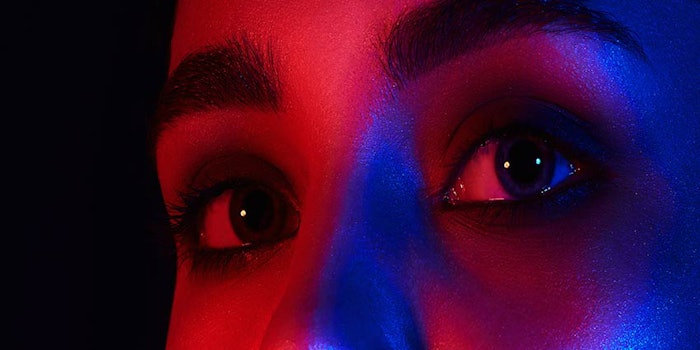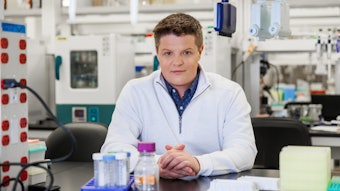
One of the key ways for brands to differentiate themselves in the crowded skin care market is through the use of innovative claims. Cosmetic product claims are incredibly motivating to consumers when browsing and comparing products and can drive higher value purchases. Here are five predictions for what the claims of the future may look like.
1. From Anti-aging to Healthy Skin
Facial skin care is the largest sector of the category and, unsurprisingly, many of the claims made on these products are related to consumers’ appearance and how products can impact that appearance.
For example, P&G led the way with Olay’s Total Effects 7-in-1 Anti-Aging Daily Face Moisturizer, an anti-aging concept based upon addressing the aspects which contribute to an aged appearance—“smooths, evens tone, brightens, refines pores, targets age spots, restores firmness, moisturizes.”
This model was further developed in 2013 by Oriflame, which defined its 12 signs of aging based on a study of more than 200 female subjects.
Further reading: Sleeping Beauties: Nighttime Skin Care Products Grow by 7% in the UK
However, in recent years we have seen a shift in consumers’ attitude against anti-aging messaging, which is now viewed as being negative, especially as the global demographic shifts towards a more aged population.
Flawless young skin is no longer the ultimate aim as we become more confident and embrace the changes that the years bring.
The tipping point perhaps came in August last year when Allure magazine declared it will no longer be using the term anti-aging and devoted an entire issue to the subject with Helen Mirren gracing the cover.
However, it is still possible to innovate in this area, as shown by the recent launch of No7 Laboratories’ Line Correcting Booster Serum, which claims to make users appear five years younger after 12 weeks of use.
We are also starting to see the emergence of healthy skin claims, based around radiance-boosting and making the best of the skin we have. This reflects a more holistic approach to appearance and beauty as a whole. Flawless young skin is no longer the ultimate aim as we become more confident and embrace the changes that the years bring.
Expect to see claims wording including terms such as luminous, brightening, dewy, glowing and, influenced by the K-beauty, “glass skin” transparency.
A Euromonitor survey in 2017 reflected this shift, showing that the top two purchase motivations for skin care were. “To improve the look or feel of my skin,” and, “For clear and healthy looking skin,” with traditional anti-aging claims down in seventh and eighth positions.
The recent Lancôme Rénergie Multi-Glow day cream is a great example of this trend in action. Aimed at women aged 60 years plus, the product claims that it, “Leaves your skin looking healthier, feeling firmer and more radiant.” Expect to see claims wording including terms such as luminous, brightening, dewy, glowing and, influenced by the K-beauty, “glass skin” transparency.
2. Efficacious Naturals
Perhaps unfairly, natural products have previously been viewed by many as not having the delivery power of their non-natural siblings. This is not only true in skin care, where natural products tend to be claims-light, but also in the wash sector where natural products have suffered from being perceived as under-performing in terms of foam, clarity and viscosity.
However, we are seeing a step change in the approach and language used by these products. Neal’s Yard Remedies Frankincense Intense Concentrate and Cream underwent a testing regime over four weeks on 152 subjects, and claims “84% agree skin looks and feels smoother and more hydrated” and “77% agree the appearance of their fine lines and wrinkles is visibly reduced.”
Expect to see natural skin care brands making stronger claims in the coming months, especially around boosting complexion.
In addition, Burt’s Bees presented three posters during the 2019 American Academy of Dermatology Annual Meeting, detailing a comparison between the brand’s product and a synthetic product and showing a superior performance on behalf of the natural product in terms of redness reduction, hydration and barrier function. Expect to see natural skin care brands making stronger claims in the coming months, especially around boosting complexion.
3. Holistic Defense: the Life Protection Factor
A recent publications from L’Oréal described the concept of what the authors termed “The Skin Aging Exposome.” “Exposome” had previously been used in the field of environmental health studies and was defined in 2005 as the composite of every exposure to which an individual is subjected from conception to death.
The paper defined this in terms of skin as follows: “The skin aging exposome consists of external and internal factors and their interactions, affecting a human individual from conception to death as well as the response of the human body to these factors that lead to biological and clinical signs of skin aging.”
Seven key factors which contribute to prematurely aged skin were identified: sun radiation (UV, visible, IR), tobacco use, temperature, nutrition, stress, lack of sleep and pollution. The paper gives details of the effects and concludes with advice on how to overcome or minimize the effects.
App-enabled sleep measurement is also readily available, while methods for monitoring nutritional intake by simply photographing meals have been proposed.
The time is now arising to move on from the sun protection factor (SPF) concept to a more joined-up, multi-factorial Life Protection Factor. Potentially, a questionnaire-based approach could be used to estimate a consumer’s exposure so far and guide them toward products suited to their skin’s current needs.
Mobile phone apps are already available which can locate us geographically, enabling both pollution and sun exposure tracking. App-enabled sleep measurement is also readily available, while methods for monitoring nutritional intake by simply photographing meals have been proposed.
This would allow consumers to monitor their own personal exposome and share the data with beauty companies, allowing them to suggest a completely focused, personalized skin care regimen and routine, along with advice on prevention and protection from future exposure.
4. Circadian Effects on Skin
Circadian rhythms are a hot topic in the scientific community and are the subject of 2017 Nobel Prize-winning research from Jeffrey C. Hall, Michael Rosbash and Michael W. Young. This area of research is of increasing interest to personal care companies.
It has been demonstrated that every cell in our bodies contains Clock genes and that skin cells express these circadian proteins. Our skin therefore follows a daily rhythm and changes its functionality dependent on what time of day it is.
Get ready for the emergence of night serums carrying claims of high levels of actives and promising dramatic results by morning.
During the day the skin’s primary objective is to protect itself, with thickness being at a maximum and cell proliferation at its lowest. At night the skin is focused on repair, with cell proliferation, barrier permeability, blood flow and penetration being at their highest levels.
So it would appear that at night the skin would be the most receptive to a formulation which was carrying high levels of active ingredients. Get ready for the emergence of night serums carrying claims of high levels of actives and promising dramatic results by morning. We have already started to see this with products such as Rodial’s Stem Cell Magic Gel with its eight-hour sleep effect claim.
5. Gentle Skin Care: Microbiome’s Leading Edge
The skin microbiome is a subject which has been almost impossible to avoid. Although it is very early days, the industry is already seeing new product launches which allude to and mention the microbiome. Aveeno’s marketing for its Dermexa Daily Emollient contrasts healthy skin as having a balanced microbiome and dry skin having an unbalanced microbiome, which the product can reportedly influence.
Free webinar: Naturally Functional: Top Probiotic Beauty Trends
I expect the subject will initially be communicated to customers as a new twist on “gentle” formulations, along the lines of “so mild it does not affect the skin’s natural bacterial flora.” Stronger efficacy claims will begin to emerge when we are more aware of the ultimate benefits of this exciting new technology for skin care.
The Future of Claims
Our predictions for future claims include a shift from anti-aging to healthy skin and complexion-based claims, natural products making stronger efficacy claims, a more holistic approach to measuring how skin has aged, more personalized regimens for protecting the skin, a refocus on night creams to deliver dramatic effects as we sleep and the emergence of claims for the microbiome. Exciting times for claims innovation lie ahead.
Daniel Whitby ([email protected]) is a business manager in the Lake Personal Care team, engaged in providing technical solutions to Lake’s customer base. He has worked in the personal care industry for more than 20 years in a variety of technical roles, including formulation and claims testing. He lectures on the Cosmetic Science BSc course at Sunderland University and Chairs the U.K. Society of Cosmetic Scientists RDG North team.











